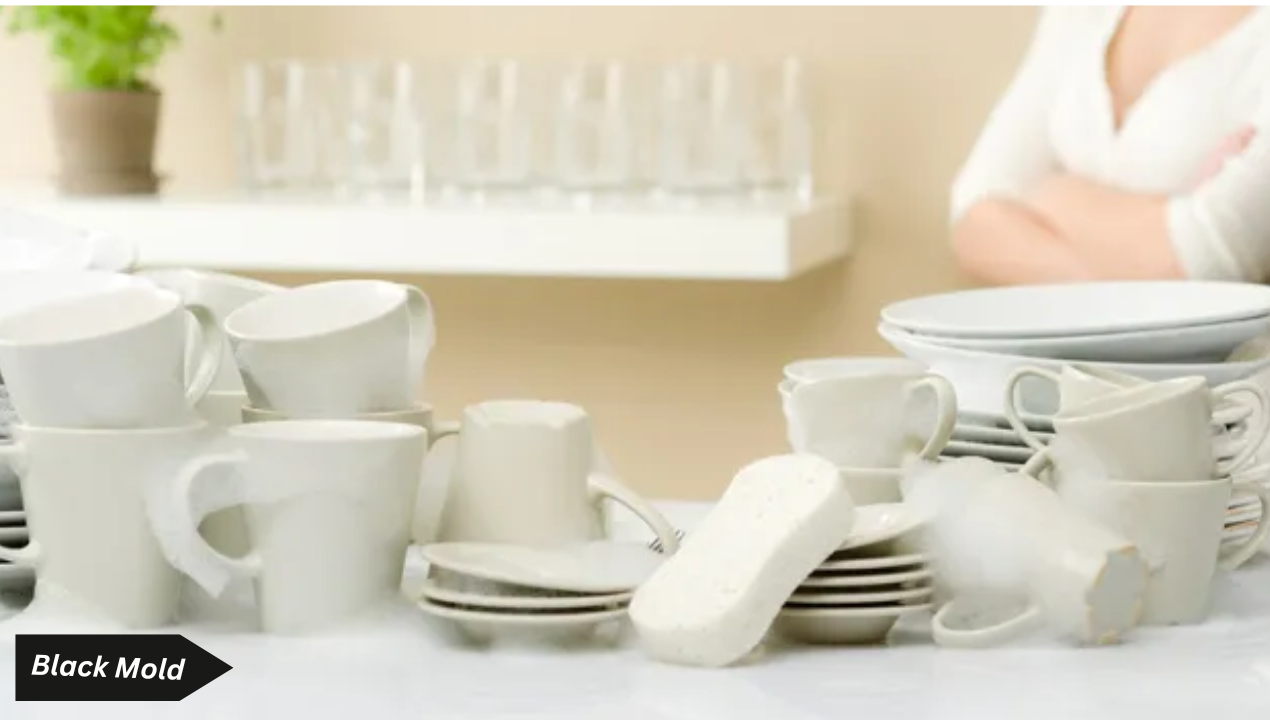Keeping dishes spotless is essential for maintaining a healthy kitchen environment. But sometimes, despite our best efforts, mold finds its way onto our dishes.
So, what do you do when mold takes over your favorite mug or plate? Let’s check how to remove mold from dishes and keep them pristine..
Causes of Mold Growth on Dishes
Moisture and Humidity
Mold loves moisture. If you’re not drying your dishes properly or if your kitchen is particularly humid, mold has the perfect environment to flourish.
Improper Cleaning and Drying
Leaving food residues on dishes and not drying them thoroughly can lead to mold growth. Even small amounts of organic matter can be a feast for mold.
Storage Issues
Stacking wet dishes or storing them in damp cabinets can also contribute to mold growth. Proper ventilation is key to preventing mold.
Health Risks
Allergic Reactions
Exposure to mold can trigger allergic reactions, including sneezing, runny nose, and skin rashes. Those with mold allergies or asthma are particularly at risk.
Respiratory Problems
Inhaling mold spores can lead to respiratory issues, such as coughing, wheezing, and shortness of breath. Long-term exposure can exacerbate chronic respiratory conditions.
Toxic Mold Exposure
Certain types of mold, like black mold (Stachybotrys), produce mycotoxins that can be extremely harmful. Symptoms of toxic mold exposure include severe headaches, memory loss, and flu-like symptoms.
Preventive Measures
Proper Dishwashing Techniques
Always scrape off food residues before washing. Use hot, soapy water and scrub thoroughly to remove any potential mold spores.
Drying Dishes Thoroughly
Air-drying dishes on a rack allows them to dry completely. Avoid stacking wet dishes, as this traps moisture and creates a breeding ground for mold.
Correct Storage Methods
Store dishes in a dry, well-ventilated area. Use dish racks to keep plates and bowls separated and allow air to circulate.
Materials Needed for Mold Removal
Cleaning Agents
- White vinegar
- Baking soda
- Dish soap
- Lemon juice
- Hydrogen peroxide
Tools and Equipment
- Scrub brush
- Sponge
- Dish rack
- Gloves
Step-by-Step Guide to Removing Mold from Dishes
Safety Precautions
Before you start, wear gloves and a mask to protect yourself from mold spores. Ensure the area is well-ventilated.
Initial Cleaning
Rinse the dishes with hot water and scrub with dish soap to remove as much mold as possible.
Deep Cleaning with Vinegar
Soak the dishes in a solution of one part white vinegar to three parts water for at least an hour. Vinegar is a natural disinfectant that kills mold spores.
Using Baking Soda for Stubborn Mold
For stubborn spots, make a paste of baking soda and water. Apply it to the moldy areas, scrub with a brush, and rinse thoroughly.
Rinsing and Drying
Rinse the dishes with hot water and dry them completely using a clean towel or dish rack.
Tips for Keeping Dishes Mold-Free
Regular Cleaning Schedule
Don’t let dishes sit in the sink for long periods. Clean them regularly to prevent mold buildup.
Using Dish Racks
Dish racks allow air circulation, helping dishes dry completely and preventing mold.
Monitoring Kitchen Humidity
Keep your kitchen’s humidity in check. Use a dehumidifier if necessary, especially in humid climates.
Conclusion
Keeping mold off your dishes is not just about aesthetics; it’s crucial for your health. By understanding the causes of mold growth and adopting effective cleaning and storage practices, you can keep your kitchen mold-free. Remember, a little diligence goes a long way in maintaining a healthy, happy home.
